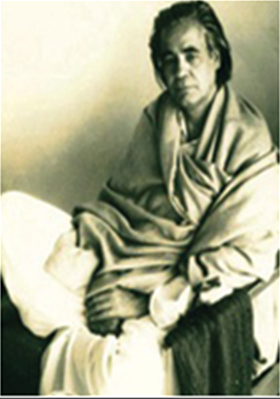Naqsh-i-Khayal
This is a collection of articles archived for the excellence of their content. Readers will be able to edit existing articles and post new articles directly |
Naqsh-i-Khayal
By Ustad Ghulam Moheyddin Moonas Naqshi
Edited by Dr Gohar Naushahi
Usloob, Islamabad
255pp. Rs160 Progressive Writers’ Movement
Revival Of The ‘Progressives’
By Intizar Husain
One needs not remind Hameed Akhtar about the great responsibility time has devolved onto him in relation to the Progressive Writers’ Movement. His writings of the past two decades speak highly of his acute sense of responsibility in this respect.
The Progressive Writers’ Movement, beginning in the mid-30s, had dominated our literary scene for nearly a decade. It came to an abrupt end [in pak] owing to what is known as the Pindi Conspiracy Case in 1951.
Since then enough time has elapsed. Most of the trends initiated by the progressive writers have been absorbed into our literary tradition. The movement now forms part of Urdu’s literary history.
It is now in need of someone who can act as a chronicler of the movement. But many stalwarts of the movement had already passed away. Those belonging to the second line are also dead. Hameed Akhtar appears to be the lone survivor. Of course, there is one more living writer belonging to this movement. She is Hajira Masroor. But she has for long stopped writing and has chosen to observe complete silence or what may be called ‘Chup ka rauza’. So the whole responsibility to act as a chronicler falls on the shoulders of Hameed Akhtar.
Hameed Akhtar, because of his long association with the movement is well in a position to act as one. His close relationship with the movement owes more to his activism than to his position as a writer. In fact, it was after the disruption of the movement that he ceased to be a party worker and was seen fully engaged in the act of writing.
However, so was a similar situation with Syed Sibt-i-Hasan; due to his association with the movement in the capacity of a party worker he had much in store to record for the benefit of literary readers and literary historians.
Hameed Akhtar had in the beginning expressed his intentions to record his reminiscences with particular reference to the Progressive Movement. But later he made an amendment in his programme. He chose to write about the leading writers associated with this movement. His first volume of this sort had appeared in 1988 under the title Ahwal-i-Dostan.
His second volume captioned as Ashnayan kya kya was published in 1992 and now its second edition has been published by Book Home this year.
From amongst the big-shots of this movement, here we find Syed Sajjad Zaheer, Faiz Sahib, Krishn Chandar, and Sibt-e-Hasan. Among the later generation, Sahir Ludhianvi, Ibrahim Jalees, and Ibn-i-Insha have been picked out for this volume. Josh, Manto and Akhlaq Ahmad Dehlvi too have been accommodated in this eminent company of the progressives.
A number of distinguished progressives are found to be missing from these two volumes. But what astounded me most is the absence of the name of Ali Sardar Jafri from Hameed Akhtar’s list of favourites.
So far as the Progressive Writers’ Movement is concerned, he perhaps stands third after Sajjad Zaheer and Faiz in the list of favourites.
This volume begins with the reminiscences of Sajjad Zaheer commonly known as Bannay Bhai. He had stayed with him at his residence in Bombay for about two years. He found him a perfect gentleman, the finest man he had ever seen. As portrayed by him, Bannay Bhai comes to us as a cultured person, well mannered, soft-spoken, soft hearted while also leading a life of austerity. Hameed Akhtar considers him as a role-model.
Equally charming appears to be for him the personality of Faiz. He portrays him as a man of few words, a sensitive soul, always ready to help friends whenever they were in trouble. Faiz Sahib had around him a wide circle of friends and admirers. Hence much has been written about him. But many of those who have written about him had nothing to do with the progressive movement. They just adored him as a poet and as a lovable personality.
Hameed Akhtar’s version of Faiz is different from others in the sense that here Faiz has been seen in the context of the movement which had played a great part in shaping who he was as a poet and as a man.
Syed Sibt-i-Hasan stands third in Hameed Akhtar’s list of preferences. He calls him his friend as well as mentor. He knew him as a cultured man, soft-spoken, well mannered and well dressed. He led a disciplined life and even while in jail he saw to it that his bed should appear neat and clean.
So these three personalities go to make for Hameed Akhtar a trio of well-bred, well-mannered, soft-spoken revolutionaries standing distinguished from their hot-tempered, vociferous comrades.
While remembering them he recalls his days as a party worker under their guidance and records his reminiscences accordingly. The remembrance of each personality recreates an age which was inspired by a movement and is now part of history.
